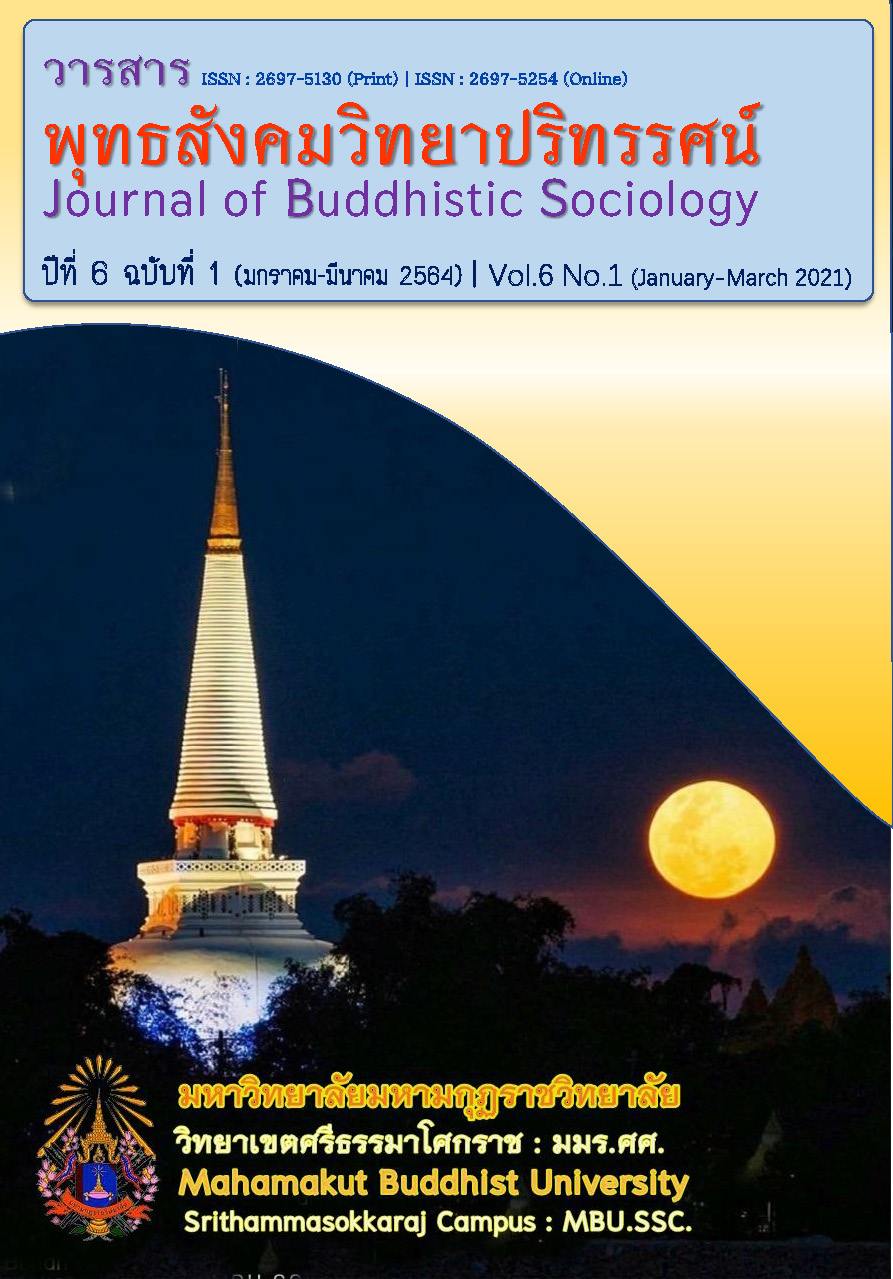THE CHARACTERS, DIALOGUES, AND NARRATIVES IN A SHORT STORY, “THE BURMESE CAT” REFLECTING THE IDEOLOGY ABOUT MARGINAL PEOPLE IN THAI SOCIETY
Main Article Content
Abstract
The objectives of this research article are to analyze and present the findings of qualitative research on the characters, dialogues and narratives which are the components of a short story, “The Burmese Cat” reflecting ideology about marginal people in Thai society. The source of data is the short story, “The Burmese Cat” which is analyzed according to the concept of analysis of elements of a narrative and ideology relating to marginal people in Thai society in terms of critical discourse analysis based on linguistic features.
The study found that even though:
The protagonist is referred to in a language unit as a noun phrase in two different phrases: “the girl from Burma” and “the Burmese cat”, they have the same meaning which is the marginality of the girl from Burma who is a foreign worker. This is how the author reflects implicitly “the Burmese cat” through the cry of a cat to mean the cry of the girl from Burma while her male employer is having forced sex with her. The dialogues of minor characters, when they talk about the two main characters, are usually about the origin or ethnicity of the Burmese reflecting the ideology of mainstream members of Thai society about marginal people in terms of being outlander, undeveloped group and their inferiority in all respects. Moreover, the narratives not only reflect the otherness in the ethnic dimension but also the ideological misconception about sex in Thai society that women must be submissive to men’s sexual desire.
Article Details
References
จิตติมา อานสกุลเจริญ. (2558). ชนชั้นและยุคสมัยการเมืองการปกครองไทย. วารสารมหาวิทยาลัยนครพนม, 5(1), 7-15.
ณัฐพร พานโพธิ์ทอง. (2556). วาทกรรมวิเคราะห์เชิงวิพากษ์ตามแนวภาษาศาสตร์: แนวคิดและการนำมาศึกษาวาทกรรมในภาษาไทย. กรุงเทพมหานคร: โครงการเผยแพร่ผลงานวิชาการ คณะอักษรศาสตร์ จุฬาลงกรณ์มหาวิทยาลัย.
ปองปรารถน์ สุนทรเภสัช. (2563). การสื่ออารมณ์ขันที่สะท้อนการเลือกปฏิบัติในสังคมไทย. วารสารนิเทศศาสตร์, 38(1), 69-82.
______ (2563ก). อคติทางชาติพันธุ์ต่อสาธารณรัฐประชาธิไตยประชาชนลาวในสังคมไทยที่ปรากฏในสื่อสังคมออนไลน์เว็บบอร์ดพันทิป. วารสารวิทยาการจัดการ มหาวิทยาลัยราชภัฏเชียงราย, 15(1), 26-47.
วนิดา บำรุงไทย. (2543). ศาสตร์และศิลป์แห่งนวนิยาย. กรุงเทพมหานคร: สุวีริยาสาส์น.
วัชรินทร์ แก่นจันทร์. (2557). ความเป็นอื่นในสังคมล้านนา: ภาพสะท้อนจากวรรณกรรมสู่พลวัติของความเป็นอื่นและการโต้กลับของกลุ่มชาติพันธุ์. วารสารวิชาการ มหาวิทยาลัยฟาร์อีสเทอร์น, 8(1), 77-92.
สำนักงานกิจการสตรีและสถาบันครอบครัว. (ม.ป.ป.). ความเสมอภาคคือความสุข. กรุงเทพมหานคร: กระทรวงการพัฒนาสังคมและความมั่นคงของมนุษย์.
อรรถพงษ์ ศักดิ์สงวนมนูญ. (2554). แมวพม่า. ใน กองทุนกนกพงศ์ สงสมพันธุ์, นิตยสารเรื่องสั้นรายฤดูกาล ราหูอมจันทร์ V0l.10 : ขอให้เดินทางโดยสวัสดิภาพ. กรุงเทพมหานคร: สำนักพิมพ์นาคร.
อัจฉรา ชลายนนาวิน และกีรติกา กีรติพงไพศาล. (2562). กระบวนการขับเคลื่อนระบบการคุ้มครองพิทักษ์สิทธิสำหรับกลุ่มหญิงไทยที่ตกเป็นผู้เสียหายการค้ามนุษย์ในต่างประเทศ. วารสารอัล-ฮิกมะฮฺ มหาวิทยาลัยฟาฏอนี, 9(18), 131-145.
อารักษณ์ สุขณะล้ำ และเชิงชาญ จงสมชัย. (2559). จริยธรรมทนายความในศาลจังหวัดมหาสารคาม. วารสารวิชาการแพรวากาฬสินธุ์ มหาวิทยาลัยกาฬสินธุ์, 3(2), 26-37.
Candide Books. (2556). ขอแสดงความยินดีกับ อรรถพงษ์ ศักดิ์สงวนมนูญ นักเขียนหนุ่ม เจ้าของเรื่องสั้นยอดเยี่ยมรางวัลกนกพงศ์ สงสมพันธุ์ ครั้งที่ 3 จากเรื่อง "แมวพม่า" ซึ่งตีพิมพ์ในนิตยสารราหูอมจันทร์ ฉบับที่ 10. เรียกใช้เมื่อ 28 พฤษภาคม 2563 จาก https://www.facebook.com/CandideBooks/ posts/247179035416991/.
Fairclough, N. (1995). Critical Discourse Analysis: The Critical Study of Language. London Aongman.
Stein, N. (1982). The definition of a story. Pragmatics, 6, 110-117.


